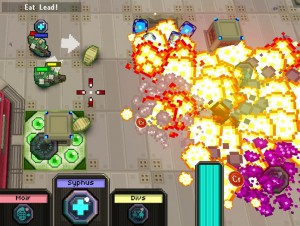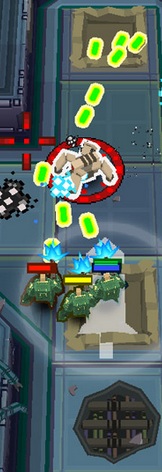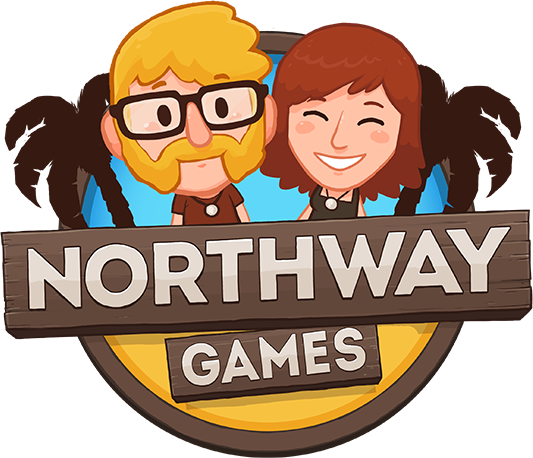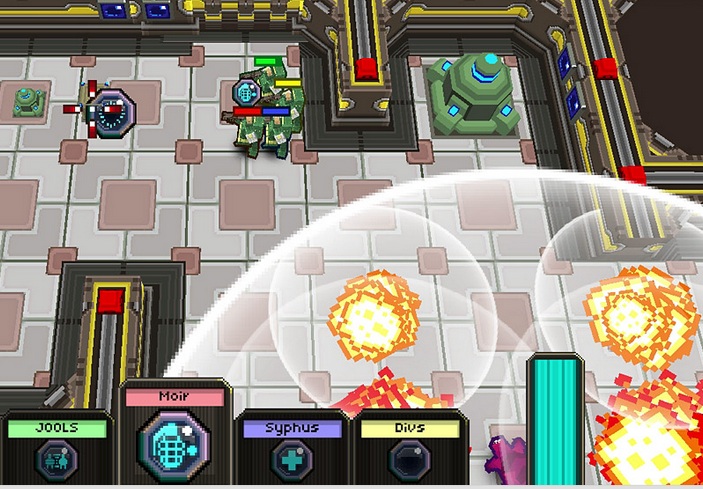 Today Richard Edwards’ game Pineapple Smash Crew was launched on Steam and Desura and it’s totaly awesome! I was lucky enough to play it before its release and I’d like to review what I think makes it such a great game.
Today Richard Edwards’ game Pineapple Smash Crew was launched on Steam and Desura and it’s totaly awesome! I was lucky enough to play it before its release and I’d like to review what I think makes it such a great game.
At its heart Pineapple Smash Crew is about managing Chaos. It is a whirling, exploding, ballet where you are constantly trying to bring order in the face of total bedlam. I think as a species we value simplicity and order so it’s a strong theme.

Managing chaos is also a powerful game mechanic because:
- pummeling it into order is fun
- while living in the chaos we are constantly being presented with new situations and small puzzles to solve
Games are about making decisions. Every moment you play there are good moves to make and bad moves to make. You succeed by choosing the good moves. In this way every game is a puzzle game. Pineapple Smash Crew is a puzzle game with very quick turns.
 In all games the fun comes from improving. From learning to play the game better. We do this by recognising situations we’ve been in before and growing a catalog of good moves which fit that situation. In some games (especially old arcade games) we play the same level over and over. This makes it easy to recognise situations because we see them in the same order every time. Every enemy or jump is a small puzzle that it’s up to us to solve. Then we have to remember the solution and apply each one in order to beat the level. This is how you play a hard Mario or Mega Man level.
In all games the fun comes from improving. From learning to play the game better. We do this by recognising situations we’ve been in before and growing a catalog of good moves which fit that situation. In some games (especially old arcade games) we play the same level over and over. This makes it easy to recognise situations because we see them in the same order every time. Every enemy or jump is a small puzzle that it’s up to us to solve. Then we have to remember the solution and apply each one in order to beat the level. This is how you play a hard Mario or Mega Man level.
These games have very little chaos in them. Because you can predict what’s coming you rarely have to improvise on the fly. Pineapple Smash Crew is different, it’s all about improvisation. In Pineapple you still have to build a catalog of situations, puzzles, and possible solutions to them. But in Pineapple you have to be more fluid in matching puzzles to solutions because you will never see exactly the same puzzle twice. Luckily our brains are really good at this. Just like we can recognise the letter “A” in many fonts we can recognise fundamentally simmilar gameplay situations.
The more we play the more situations we can recognise and the more chaos we can endure. This is essentially what a difficulty curve is. It’s an attempt to present you with slight variations on puzzles you’ve already solved and require you to solve them more precisely and efficiently.
Rich has done a great job of orchestrating this dance between order and chaos. You wont be thinking about cataloguing situations or slight variations, that all goes on in the subconscious. You’ll just be thinking “Oh god where is the next health pickup” and “Fuck Yeah!” when you blow the hell out of six guys with one well aimed rocket.


